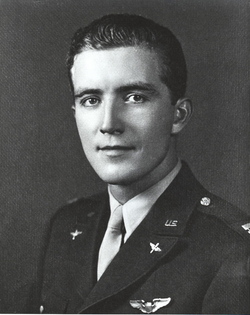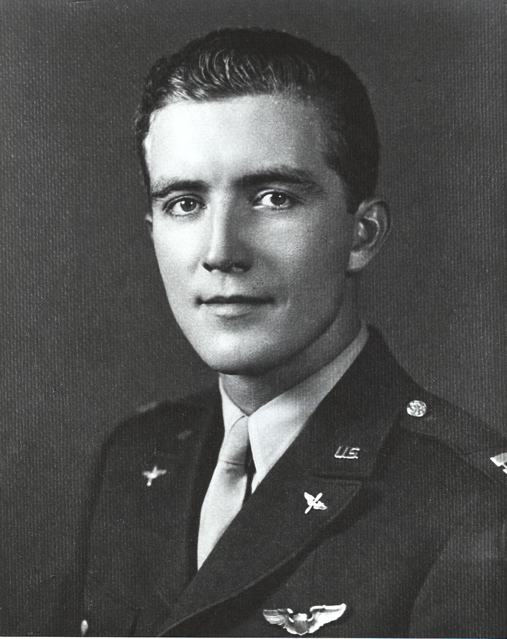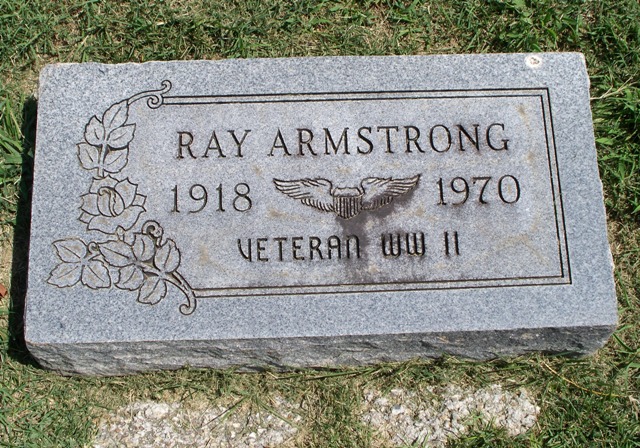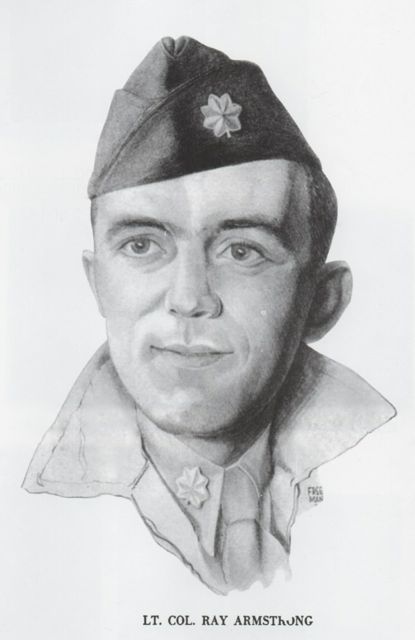After serving as an Operations Officer and a B-17 flight instructor stateside, he was assigned to the 390th Bombardment Group (Heavy), 8th Air Force, on June 30, 1943, and was stationed at RAF Framlingham (Parham), England. He began as a Squadron Operations Officer in the 568th Bombardment Squadron (H), and in December 1943, was designated as a Squadron Commanding Officer, and Group and Wing Lead. He attained the rank of Lieutenant Colonel and was appointed as the Squadron Commanding officer of the 569th Bombardment Squadron (H). He flew 36 missions over Europe and logged 448 combat hours.
Ray earned Overseas Service Bars from July 15, 1943 to August 12, 1944 and October 12, 1944 to April 8, 1945. He was awarded the Distinguished Flying Cross with Oak Leaf Cluster on July 20, 1944 and again on November 6, 1944. He received the American Defense Ribbon and the American Campaign ribbon. He received the Normandy Star and Germany Star on October 5, 1944 and the European, African, Middle-Eastern Campaign Ribbon and the Air Offense Europe Star on November 28, 1944. The Northern France and Ardennes Star was added on April 19, 1945. He was awarded the Air Medal with Silver Oak Leaf Cluster on January 14, 1945 for flying 35 missions. He also received the WWII Victory Medal. He left the military in April, 1945.
After he came back from the war, he became a pilot for TWA, beginning in June, 1946 as a First Officer in the Douglas DC-3. He met Bette McDonald while they both worked for TWA at the Kansas City Municipal Airport, and they were married on May 4, 1946 in St. Joseph, Missouri. They moved to Delaware in April, 1947 and stayed for a year while he flew internationally with TWA. They returned to Kansas City, Kansas, to stay when he requested domestic routes. Ray and Bette had four children, Scott, Leslie, Bruce, and Ann.
He had an Airline Transport Pilot Certificate for multi-engine aircraft with type ratings in the Martin 202/404, Douglas DC-3, Lockheed L-49 Constellation, Convair 880/990, and Boeing 707 and 727, retiring for health reasons in 1967.
Ray had learned carpentry from his Father, and enjoyed using his skills in his spare time at home. He loved Opera, and played the French Horn.
After serving as an Operations Officer and a B-17 flight instructor stateside, he was assigned to the 390th Bombardment Group (Heavy), 8th Air Force, on June 30, 1943, and was stationed at RAF Framlingham (Parham), England. He began as a Squadron Operations Officer in the 568th Bombardment Squadron (H), and in December 1943, was designated as a Squadron Commanding Officer, and Group and Wing Lead. He attained the rank of Lieutenant Colonel and was appointed as the Squadron Commanding officer of the 569th Bombardment Squadron (H). He flew 36 missions over Europe and logged 448 combat hours.
Ray earned Overseas Service Bars from July 15, 1943 to August 12, 1944 and October 12, 1944 to April 8, 1945. He was awarded the Distinguished Flying Cross with Oak Leaf Cluster on July 20, 1944 and again on November 6, 1944. He received the American Defense Ribbon and the American Campaign ribbon. He received the Normandy Star and Germany Star on October 5, 1944 and the European, African, Middle-Eastern Campaign Ribbon and the Air Offense Europe Star on November 28, 1944. The Northern France and Ardennes Star was added on April 19, 1945. He was awarded the Air Medal with Silver Oak Leaf Cluster on January 14, 1945 for flying 35 missions. He also received the WWII Victory Medal. He left the military in April, 1945.
After he came back from the war, he became a pilot for TWA, beginning in June, 1946 as a First Officer in the Douglas DC-3. He met Bette McDonald while they both worked for TWA at the Kansas City Municipal Airport, and they were married on May 4, 1946 in St. Joseph, Missouri. They moved to Delaware in April, 1947 and stayed for a year while he flew internationally with TWA. They returned to Kansas City, Kansas, to stay when he requested domestic routes. Ray and Bette had four children, Scott, Leslie, Bruce, and Ann.
He had an Airline Transport Pilot Certificate for multi-engine aircraft with type ratings in the Martin 202/404, Douglas DC-3, Lockheed L-49 Constellation, Convair 880/990, and Boeing 707 and 727, retiring for health reasons in 1967.
Ray had learned carpentry from his Father, and enjoyed using his skills in his spare time at home. He loved Opera, and played the French Horn.
Family Members
Sponsored by Ancestry
Advertisement
Advertisement









